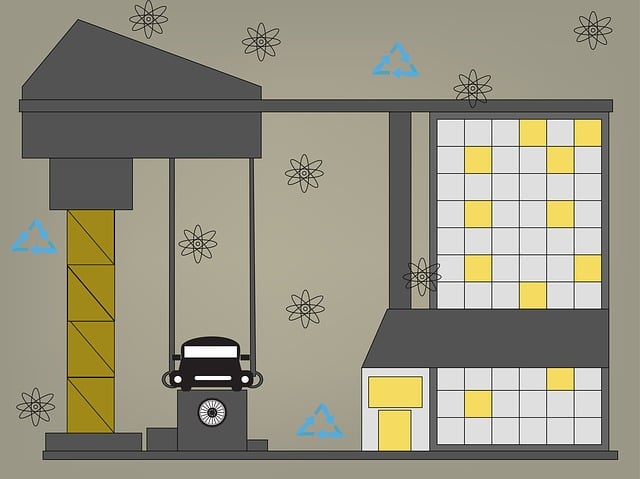Commercial insurance is a vital shield for businesses, offering comprehensive protection against physical asset losses from fires, vandalism, theft, natural disasters, and more. It also includes liability coverage for injuries, property damage, and service errors to customers. Policies are tailored through risk assessment, factoring in location, structure, activities, demographics, and regulatory frameworks. Commercial insurance addresses unique business risks not covered by personal policies, providing financial security against operations disruptions, asset losses, equipment failures, and legal liabilities, including slip-and-falls and product claims. A well-understood and managed claims process ensures swift resolution, promoting business continuity.
“In today’s business landscape, securing adequate commercial insurance is paramount. This article serves as your comprehensive guide to understanding various facets of commercial property and liability insurance. We delve into what commercial property coverage entails, exploring its crucial role in safeguarding businesses from unforeseen events. Additionally, we dissect different types of liability coverage, risk assessment factors, and key differences between commercial and personal property insurance. Get ready to navigate the intricacies of claims management and discover how liability insurance acts as a shield for your business.”
Understanding Commercial Property Insurance: What It Covers

Commercial property insurance is a crucial safety net for businesses, protecting their physical assets from potential risks and disasters. This type of insurance covers a wide range of perils, including fire, vandalism, theft, and natural occurrences such as floods or earthquakes. It ensures that business owners can recover and replace their valuable property, maintaining continuity in their operations.
The coverage extends beyond the building itself, encompassing essential business possessions like inventory, equipment, and fixtures. Additionally, it provides liability protection, shielding businesses from financial loss resulting from accidents, injuries, or damage to others’ property on their premises. This aspect is especially vital for commercial spaces that host customers or clients regularly.
Types of Liability Coverage for Businesses

Businesses operating in the commercial sector face various risks and potential liabilities, which is why having adequate insurance coverage is paramount. Commercial property and liability insurance are two critical components that protect businesses from financial loss and legal repercussions. Within the liability coverage sphere, several types of policies cater to different business needs.
General Liability Insurance is a fundamental component, shielding businesses against claims of bodily injury or property damage to customers, clients, or visitors on their premises. Professional Liability Insurance, also known as errors and omissions coverage, protects businesses from financial loss arising from professional negligence or mistakes made during service provision. Additionally, Commercial Insurance may include products liability coverage for manufacturers and retailers, guarding against product-related accidents or damages.
Assessing Risk: Key Factors in Commercial Insurance Policies

When crafting commercial insurance policies, assessing risk is a critical step that involves analyzing various factors unique to each business and its operations. Key among these are the property’s location, age, and structural integrity—an old building in a high-risk area might necessitate more extensive coverage than a newer structure in a safer neighborhood. The nature of the business activities is equally important; industries dealing with hazardous materials or requiring specialized equipment may require customized policies to account for potential liabilities.
Moreover, understanding the demographic and traffic patterns surrounding the property is vital. High foot traffic or proximity to potential risks like bodies of water or industrial zones could significantly impact premium calculations. Insurers also consider historical data on claims and local regulatory frameworks that dictate safety standards, ensuring policies align with legal requirements and adequately protect businesses from unforeseen events.
Commercial vs. Personal Property Insurance: Key Differences

Commercial property insurance and personal property insurance serve distinct purposes, with significant differences in coverage and scope. Commercial insurance is tailored to protect businesses from financial loss related to their operations and assets. It includes comprehensive coverage for buildings, inventory, equipment, and liability protection against claims of third parties. This type of insurance is crucial for commercial entities as it helps them navigate the risks inherent in running a business.
In contrast, personal property insurance focuses on safeguarding an individual’s private possessions, such as their home or car. It covers personal belongings against damage or theft. While both types of insurance are essential, commercial insurance offers broader protection, acknowledging the unique challenges and financial exposure faced by businesses. This specialized coverage ensures that commercial enterprises can continue their operations uninterrupted and manage potential liabilities effectively.
The Role of Liability Insurance in Business Protection

Liability insurance plays a pivotal role in safeguarding businesses from potential risks and financial losses. In the dynamic landscape of commercial property, it acts as a shield against unforeseen events that could disrupt operations and impact profitability. From slip-and-fall incidents on premises to product liability claims, this type of insurance provides coverage for legal expenses, medical bills, and settlements or judgments imposed on the business.
In today’s digital era, where businesses face diverse risks, commercial insurance offers comprehensive protection tailored to specific needs. By understanding their exposure and selecting appropriate liability policies, business owners can ensure they are prepared for any eventuality. This proactive approach enables them to focus on growth and success while mitigating the financial consequences of unexpected liabilities.
Common Exclusions and Limitations in Commercial Policies

Commercial property and liability insurance policies are designed to protect businesses from financial loss, but they also come with certain exclusions and limitations that policyholders should be aware of. These can vary across different insurance providers and policy types, but some common exclusions include damage or loss caused by acts of war, terrorism, or natural disasters, such as earthquakes or floods, which are often not covered under standard commercial insurance policies.
Additionally, many policies exclude liability for intentional acts or those arising from specific business activities like pollution, professional services, or data breaches. Businesses should carefully review their policy documents to understand these exclusions and consider additional coverage if needed. Understanding these limitations is crucial in navigating potential risks and ensuring adequate protection under a commercial insurance policy.
Navigating Claims: A Step-by-Step Guide for Business Owners

Navigating Claims: A Step-by-Step Guide for Business Owners
When it comes to commercial insurance, understanding the claims process is crucial for any business owner. The first step in navigating a claim is to assess the situation and determine if there has been a covered loss. This involves reviewing your policy to understand what types of events are considered insurable under your specific coverage. Once you’ve confirmed that the event is covered, it’s time to gather all necessary information—photos, receipts, invoices, witness statements, etc.—to support your claim.
Next, contact your insurance provider promptly to report the loss. They will assign a claims adjuster who will work with you throughout the process. Be prepared to provide detailed accounts of the incident and cooperate fully with the adjuster’s inquiries. Keep clear records of all communications and documentation related to your claim. The insurer will then assess the damage, determine the cost of repairs or replacement, and provide an offer for compensation based on your policy terms and conditions.
